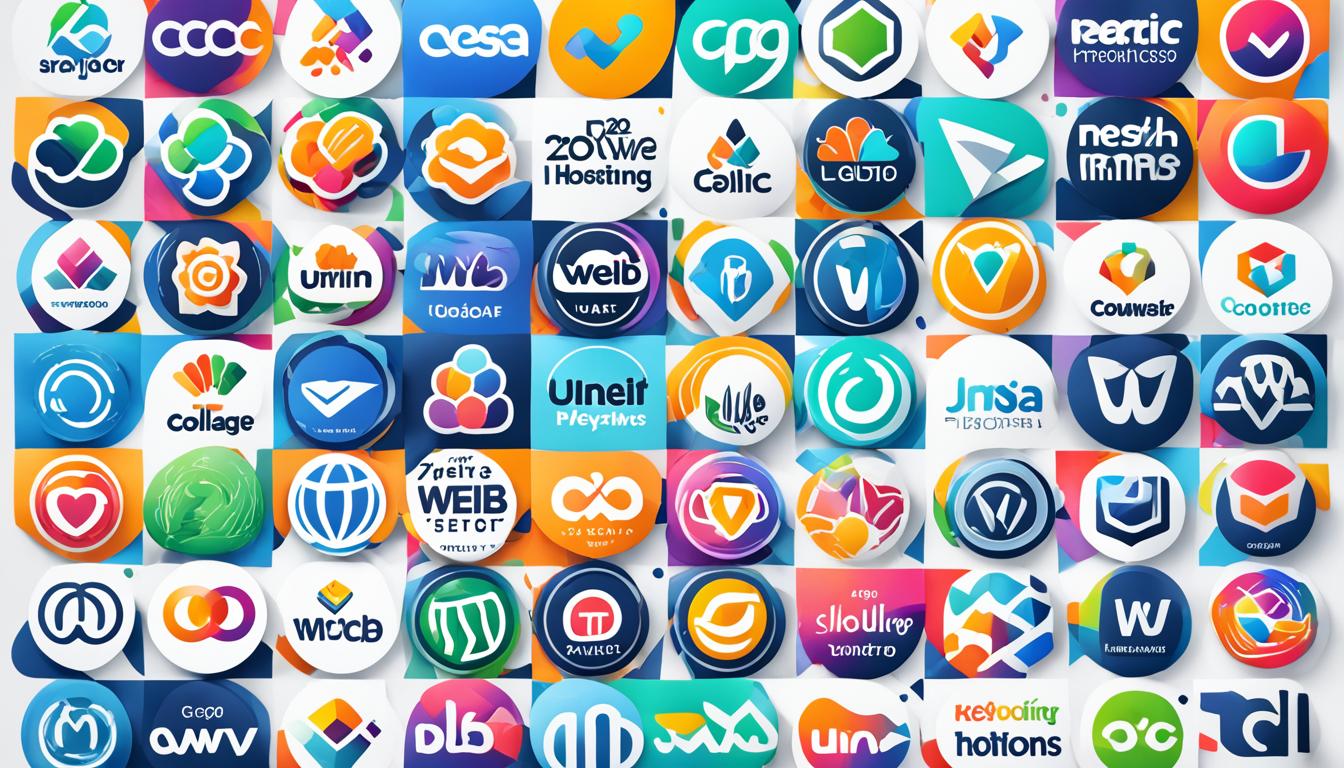7 Global Websites That Use PHP in 2024
Did you know that PHP, a server-side scripting language, powers some of the largest and most popular websites worldwide? In fact, in 2024, seven global websites will continue to rely on PHP for their functionality and performance. These PHP-based global websites are at the forefront of web development, harnessing the power of this versatile language to deliver dynamic and scalable user experiences.
Key Takeaways:
- PHP is a popular server-side scripting language used by top global websites.
- Websites like Facebook, WordPress, and Wikipedia rely on PHP for their core functionality.
- PHP offers advantages such as easy integration with databases, rapid development, and scalability.
- The history of PHP spans from its creation in 1994 to its latest version, PHP 8.
- PHP maintains a strong market position and is widely used on websites around the world.
What is PHP?
PHP, which stands for PHP: Hypertext Preprocessor, is a server-side scripting language primarily used for web development. It was created in 1994 by Rasmus Lerdorf and has since become one of the most popular and widely used programming languages for developing dynamic websites.
As a server-side scripting language, PHP is executed on the server, generating HTML code that is then sent to the client’s web browser. This means that PHP is responsible for processing and handling tasks on the server-side, such as interacting with databases, handling form submissions, and generating dynamic web content.
PHP is an open-source language, which means it is freely available to use, modify, and distribute. This open-source nature has contributed to PHP’s widespread adoption and the development of a large and active community of PHP developers.
The syntax of PHP is similar to C and Perl, making it relatively easy to learn for developers with experience in these languages. It follows a code structure that combines HTML markup and PHP code, allowing developers to embed PHP within HTML documents seamlessly.
One of PHP’s notable strengths is its seamless integration with databases. PHP can connect to various database management systems, such as MySQL, PostgreSQL, and Oracle, allowing developers to easily retrieve, store, and manipulate data in their web applications.
Overall, PHP’s combination of being an open-source language, its syntax familiarity, and its integration with databases make it a popular choice for web developers looking to build dynamic and data-driven websites.
Advantages of Web Development with PHP
When it comes to web development, PHP offers numerous advantages that make it a preferred choice among developers. Let’s explore some of the key advantages of using PHP:
- Open-Source: PHP is an open-source language, which means it is freely available for use, modification, and distribution. This open nature of PHP makes it cost-effective and accessible to developers.
- Large Community: PHP has a vast and active community of developers who contribute to its growth and provide ample support and resources. This extensive community ensures that developers can find assistance, information, and solutions to their programming challenges.
- Easy to Learn: PHP has a simple and intuitive syntax, making it relatively easy to learn, especially for those with prior experience in languages like C and Perl. This ease of learning allows developers to quickly grasp the fundamentals of PHP and start building web applications in no time.
- Platform-Independent: One of the significant advantages of PHP is its platform independence. It can run on various operating systems and servers, including Windows, Linux, macOS, and more. This platform independence gives developers the flexibility to deploy PHP applications on a range of environments.
- Scalable: PHP is known for its scalability, making it suitable for both small and large web applications. Developers can easily scale their PHP projects to accommodate increasing traffic and user interactions without compromising the performance of the application.
- Integration with Databases: PHP seamlessly integrates with popular databases like MySQL, PostgreSQL, Oracle, and more. This integration allows developers to create dynamic and data-driven web applications, empowering them to build robust systems that manage and process vast amounts of information.
- Rapid Development: PHP offers built-in functions and frameworks that accelerate the development process. These tools simplify common tasks, provide ready-to-use solutions, and facilitate faster prototyping and deployment. This rapid development capability of PHP enables developers to deliver projects efficiently and meet tight deadlines.

In conclusion, PHP provides numerous advantages for web development, including being an open-source language, having a large community for support, ease of learning, platform independence, scalability, seamless database integration, and enabling rapid development. These advantages make PHP a versatile and powerful choice for building dynamic and data-driven web applications.
The History of PHP
The History of PHP
The PHP programming language has an interesting history that dates back to 1994. It was created by Rasmus Lerdorf, who initially developed a set of scripts for tracking website visitors. Over the years, PHP has evolved into one of the most widely used programming languages for web development.
In 1996, PHP 3 was released, marking the first widely used version of the language. This version laid the foundation for PHP’s popularity and introduced many of the core features that developers rely on today.
In 2000, PHP 4 was launched, bringing significant improvements in performance and functionality. This version cemented PHP’s position as a powerful and reliable language for building dynamic websites.
With the release of PHP 5.6, developers witnessed enhanced security measures and improved performance optimizations. PHP 5.6 enabled developers to build more secure and efficient web applications, ensuring the protection of sensitive user data.
PHP 7, introduced in 2015, focused on further advancements in performance and memory usage. The latest version, PHP 8, was released in 2020 and continues to enhance the language with new features and improvements.
Throughout its history, PHP has proven to be a versatile and robust programming language, capable of adapting to the changing needs of web development. Its evolution over time has solidified its position as a popular choice among developers worldwide.
PHP Websites That Clean Up
PHP is the driving force behind some of the most successful websites on the internet. Let’s take a look at a few notable examples:
- Facebook: As the largest social media platform in the world, Facebook was built entirely using PHP. Its robust and scalable architecture, powered by PHP, enables seamless user interactions and data handling.
- WordPress: A popular content management system, WordPress relies heavily on PHP for its core functionality. PHP has played a crucial role in empowering millions of websites, blogs, and online stores worldwide.
- Wikipedia: The extensive data and complex queries of the online encyclopedia are handled efficiently by PHP. It ensures a smooth user experience, enabling users to access a wealth of information with ease.
- Slack: A widely-used communication and collaboration tool, Slack has been utilizing PHP since its inception. PHP’s versatility and reliability contribute to the seamless messaging experience offered by Slack.
- Mailchimp: As a leading email marketing platform, Mailchimp relies on PHP for its backend operations. PHP enables Mailchimp to handle a large volume of emails and automate marketing campaigns effectively.
These PHP-powered websites exemplify how this versatile programming language has revolutionized web development, providing the foundations for dynamic and engaging user experiences.

| Website | Industry |
|---|---|
| Social Media | |
| WordPress | Content Management |
| Wikipedia | Information |
| Slack | Communication & Collaboration |
| Mailchimp | Email Marketing |
PHP Usage Statistics
PHP is widely adopted as a server-side programming language for websites. According to recent statistics, approximately 76.5% of websites utilize PHP as their server-side language. This showcases the extensive popularity and trust in PHP within the web development community.
When examining the versions of PHP being used, it is apparent that the majority of PHP websites are on version 7.0 and above. In fact, version 7.0 is the most widely adopted version, accounting for 58.2% of PHP websites. This indicates a strong inclination towards utilizing the latest and more powerful features provided by PHP.
The continuous growth in PHP usage further solidifies its market position in comparison to other server-side languages. PHP’s flexibility, scalability, and extensive community support contribute to its sustained popularity among web developers and website owners.
| Version | Percentage of PHP Websites |
|---|---|
| 7.0 | 58.2% |
| 7.1 | 17.1% |
| 7.2 | 11.4% |
| 7.3 | 6.6% |
| 7.4 | 5.2% |
| Other Versions | 1.5% |
Best PHP Website Examples
When it comes to showcasing the effective use of PHP, there are numerous websites that stand out as shining examples. These websites not only leverage PHP’s power and versatility but also demonstrate how it can be effectively used to create dynamic and scalable web applications.
One of the most prominent PHP-powered websites is WordPress. This popular content management system relies on PHP for its robust blog and CMS functionality, enabling millions of users worldwide to create and manage their websites with ease.
Another notable example is Facebook, which heavily relies on PHP to handle its massive user base and deliver a seamless social media experience. PHP’s scalability and performance optimization are key factors in supporting the billions of users who engage with the platform daily.
E-commerce giant Etsy also understands the power of PHP. By optimizing its page speeds with PHP, Etsy ensures a fast and seamless browsing and shopping experience for its millions of users across the globe.
These are just a few examples of websites that effectively utilize PHP, but there are many more. Websites like Wikipedia, Slack, Tumblr, Mailchimp, Yahoo, Drupal, Spotify, Magento, Pfizer, Peloton, Moodle, and Canva all rely on PHP to create and deliver their unique web experiences.
These examples highlight the effectiveness of PHP in building dynamic, scalable, and feature-rich websites that cater to diverse user needs and requirements.
FAQ
What is PHP?
What are the advantages of web development with PHP?
What is the history of PHP?
Which global websites use PHP?
What are the usage statistics of PHP?
Can you provide examples of best PHP websites?
- How Strategic SEO Drove Growth for a CPAP E-commerce Brand - July 24, 2025
- Top 3 SEO Companies in Toronto: An Analytical Comparison - July 23, 2025
- SEO for Entry Door Services - April 24, 2025





















Post Comment
You must be logged in to post a comment.